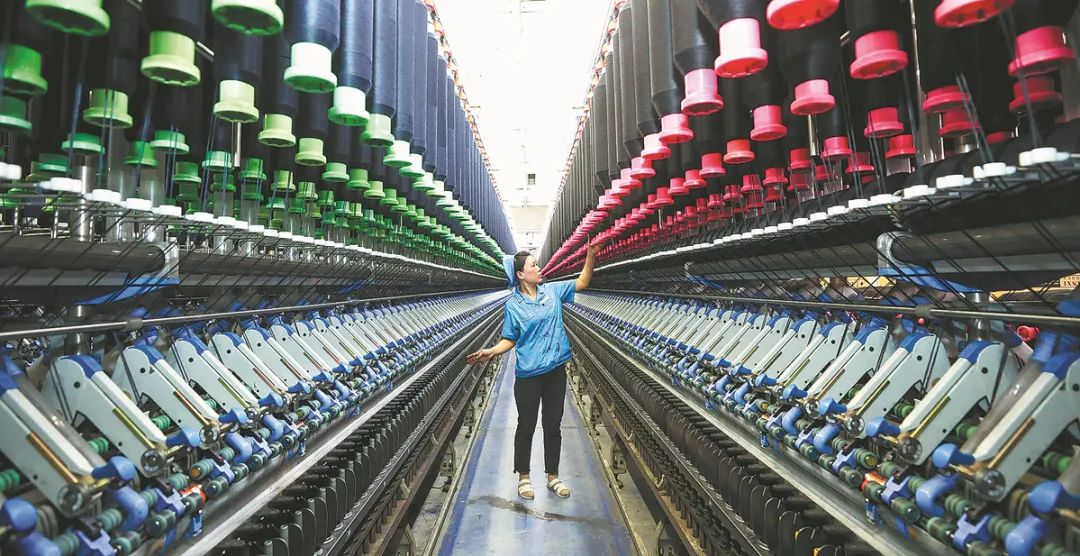Add:1506,Tower West,Jinrun International Plaza,No.85 East Nanxijiang Street,Jianye District,Nanjing,China,210019
Tel: 025-58866358
025-58933315
Fax:025-58867358
E-mail:info@bonagrain.com

▲A textile company employee works at a factory in Huai'an, Jiangsu province, on Monday. China's purchasing managers index reached 50.1 in January, passing the 50-point mark that separates growth from contraction. ZHAO QIRUI/FOR CHINA DAILY
The official purchasing managers index for China's manufacturing sector bounced back to 50.1 in January, after reaching 47 in December, data from the National Bureau of Statistics showed. The 50-point mark separates contraction from growth.
China's non-manufacturing PMI came in at 54.4 in January, up from 41.6 in December.
The country's official composite PMI, which includes both manufacturing and services activities, came in at 52.9, compared with 42.6 in December, according to the NBS.
Analysts said the rapid expansion of economic activity signals that prospects for economic recovery are improving. Thanks to the implementation of optimized COVID containment measures, the robust recovery in activity and mobility, and stronger policy support, they expect a notable rebound in GDP growth in 2023.
The International Monetary Fund has also raised its forecast for China's economic growth in 2023 to 5.2 percent, up 0.8 percentage points from its projection in October. The country's recent moves have paved the way for a faster-than-expected recovery, the IMF said in its latest World Economic Outlook report.
Pierre-Olivier Gourinchas, IMF chief economist, said at a news conference held on Tuesday in Singapore to launch the report that the world is witnessing a rapid recovery of the Chinese economy.
The IMF also noted that world economic growth will slow from 3.4 percent in 2022 to 2.9 percent in 2023.
Zhao Qinghe, a senior statistician at the NBS, noted the improvement in China's vast manufacturing sector, saying that factory activity expanded due to resumption of normal production and daily life.
Total new orders bounced back to expansionary territory with its sub-index rising to 50.9 in January, the highest level seen since June 2021. Also, the sub-index for production stood at 49.8 in January compared with 44.6 a month earlier, according to the NBS.
Lu Ting, chief China economist at Nomura, said that January's official manufacturing PMI was in line with market expectations, while the non-manufacturing PMI was well above market expectations, thanks to the release of pent-up demand for in-person services sectors.
According to the Ministry of Culture and Tourism, there were 308 million domestic tourist visits during the seven-day Spring Festival holiday, up 23.1 percent year-on-year and equivalent to about 88.6 percent of the pre-COVID level in 2019.
Looking to February, Lu said his team expects both the manufacturing and non-manufacturing PMIs to rise further.
Lu also warned of headwinds and challenges ahead, given relatively moderate pent-up demand, mainly in catering and tourism, long-term issues in the property sector and weakening external demand.
Citing the State Council executive meeting chaired by Premier Li Keqiang on Saturday, Wen Bin, chief economist at China Minsheng Bank, said the country has stepped up efforts to consolidate the momentum of the recovery.
Noting the challenge of lackluster demand, the meeting called for measures to promote an early recovery of consumption as the main economic driving force, steadfastly advance opening-up as well as upgrade foreign trade and investment.
Looking into the full year, Wen said China is on track for a steady rebound with the COVID shocks fading and stimulus policies taking effect gradually. He forecast that the economy will likely expand around 5.5 percent in 2023, higher than the 3 percent GDP growth in 2022.
记者:欧阳诗嘉 赵焕新


